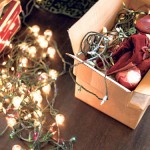Shining the Light on an Energy-Efficient Home
It’s easy to instantly trim your energy consumption and boost the eco-friendliness of your home. The key to easy energy savings is lighting. Though for many homeowners and renters, knowing how and what to do to improve their home’s lighting energy efficiency can be confusing.
To alleviate that confusion, the American Lighting Association (ALA) offered eight easy energy-saving steps:
1. Replace incandescent bulbs with compact fluorescents (CFLs).To make an immediate impact on your energy consumption — and your utility bill — swap out your most-used incandescent bulbs with CFLs. “It’s the easiest way to start improving your energy efficiency,” said Joe Rey-Barreau, education consultant for the ALA and an associate professor at the University of Kentucky’s School of Interior Design. If you have not used any residential CFLs in your home, you might be surprised at their range and versatility. The newest CFLs do not flicker like those of old, and they have much better color quality than even just a few years ago. A close look at the color temperature listed on the bulb package label can help you get the right product. “What happens is that people buy a color temperature that’s too cool, and they absolutely hate it,” said Rey-Barreau. Instead, choose a bulb that’s labeled “residential color,” “warm” or “soft white.”
2. Replace dimmable incandescent bulbs with dimmable CFLs. As the color range of CFLs has improved, so has their ability to be dimmed, said Rey-Barreau — and dimmable bulbs are a proven way to decrease energy use. However, while technology has come a long way, CFLs still do not have the dimming range of incandescents. “At about 20 to 30 percent, the CFL will shut off,” said Rey-Barreau.
3. Buy name brands. It is frustrating to invest in a longer-lasting bulb only to have it burn out quickly. To avoid that, buy recognizable brands for improved quality and color.
4. Revamp outdoor fixtures. Your outdoor lighting fixture may be beautiful, but it may be an energy guzzler, too. Start outside as you slowly replace fixtures with more energy-efficient versions. Look for those that use either CFLs or light-emitting diodes (LEDs), or those that activate using a motion sensor or photocell.
5. Buy Energy Star-qualified fixtures and bulbs. Energy Star is a U.S. Department of Energy certification most recognized on appliances — though also used on lighting fixtures and bulbs. “Any time someone buys a product that has the Energy Star label, they’ll know it has both efficiency and quality verified,” said Rey-Barreau.
6. Retrofit recessed lighting with LED fixtures. Recessed fixtures can be easily replaced with super energy-efficient LED versions — without any messy construction. “You just take off part of the existing fixture, and the replacement fixture fits into the old housing,” said Rey-Barreau. “LED fixtures have a high initial cost, but the fixture will last literally the lifetime of the project.”
7. Replace under-cabinet lighting. With long life and super-high efficiency, some LED lighting also offers fairly easy installation, including pucks and strips used as under-cabinet lighting. As an added bonus, LED lights will not give off the undesirable heat of incandescents.
8. Be realistic in your expectations. While upgrading some or all of your lighting is a good way to improve your energy efficiency, it is not a one-stop solution. “One of the things sometimes misunderstood is that people assume if they replace all of their incandescent lighting with energy-efficient versions, they are going to save this huge amount on their electricity,” said Rey-Barreau. They will save, of course, but since lighting only accounts for about 10 percent of all electricity consumption, the amount saved will be relative to that. The most savings come over the long term with continued lower utility bills and fewer burned-out bulbs.
Visit your local ALA-member retail showroom to see the newest products and to talk to an expert. To find your closest ALA-member lighting showroom, visit www.americanlightingassoc.com.
This article is courtesy of Brandpoint.
Eco-friendly, safe holiday lighting tips
Holiday lighting, both inside and outside the home, adds joy and cheer to the season. The tips below from the nation’s electric utility companies will help you to safely light up some energy savings — along with the neighborhood.
Over the past few years, a new type of light bulb, called the light emitting diode or LED bulb, has become a popular choice for holiday lighting. The LED bulbs are the best choice from an energy-efficiency standpoint.
As always, anytime you are working with electricity, it pays to keep the following safety tips in mind:
Decorating outside the home
• Decorate only during daylight hours so it’s easy to see power lines and avoid them with your ladder.
• Before stringing lights in outdoor trees, check to be sure the tree hasn’t grown too close to power lines. If it comes in contact with the power lines, the entire tree could be electrified.
• For added protection, plug outdoor lights and decorations into circuits protected by ground fault circuit interrupters (GFCI outlets typically have a “reset” and “test” button).
Decorating inside the home
• Trim your tree with only flame-resistant materials, including tinsel or artificial icicles made of plastic or lead-free metal.
• Do not run cords under rugs, through doorways, around sharp corners or over pipes.
• Connect decorative lights to multi-outlet power strips that contain their own breakers.
• Never use lighted candles on a tree or near other evergreens.
• Do not use water on an electrical fire.
This article is courtesy of Home Improvement News and Information Center.


